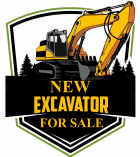Your skid steer works hard every day. Over time, attachments and parts take on wear that lowers performance. Knowing when to replace them saves money, prevents downtime, and keeps your projects moving. These are seven signs your skid steer needs new attachments or parts.
Visible Wear and Damage
Look closely at your attachments. Cracks, dents, and worn edges reduce efficiency. A bucket with a worn cutting edge struggles to dig. Safety hazards arise from hydraulic hoses that have leaks or breaks. Larger failures result from even minor wear indicators. Replace components before they lead to more serious problems.
Hydraulic Power Loss
Your skid steer's hydraulic performance is crucial. Worn hydraulic parts are frequently the cause of sluggish or forceless movement in an attachment. It is more difficult to lift, dig, or grapple when the hydraulics are weak. Look for malfunctioning cylinders, broken hoses, or leaky seals. It's possible that your system is correcting for worn parts if hydraulic oil usage rises.
Unusual Noises During Operation
Grinding, squeaking, or clunking noises point to attachment or part problems. A healthy connection makes very little noise. Loud sounds frequently indicate worn bearings, bent arms, or loose pins. Abrupt breakdowns result from ignoring the sounds. As soon as you hear further noises, check your machine.
A decrease in job efficiency
Your attachments can be the cause of tasks taking longer than they used to. Less material is carried by a worn bucket. Drilling is slower with a dull auger. Securing cargo is difficult for a bent grapple. Keep track of the duration of tasks. Replacing parts or attachments restores efficiency if productivity declines. When equipment starts to malfunction, contractors who keep note of time spent on each activity may clearly discern a pattern.
Frequent Breakdowns and Repairs
Needing constant fixes is a strong warning sign. If your skid steer spends more time in maintenance than in use, parts are overdue for replacement. Repairs cost more in labor and downtime than planned part replacements. A new attachment or critical spare saves money in the long run.
Attachment Instability
Attachments should fit tightly to your skid steer. If they wobble, tilt, or fail to stay locked, your mounting plate or pins might be worn. Loose attachments reduce safety and control. Check for wear on quick-attach systems. A secure fit is essential for operator safety and precise operation.
Increased Use of Fuel
Your skid steer has to work harder when its attachments are worn. Fuel consumption increases as a result. For instance, it takes more passes to transfer material in a bucket with a worn edge. The engine must exert more effort due to a malfunctioning hydraulic attachment. Track the amount of fuel used. A discernible rise frequently indicates that new components or attachments are required.
How to Prevent Wearing Out
By remaining proactive, you can avoid the majority of downtime. Here are some doable actions:
- Before and after every shift, check the attachments.
- Monitor productivity and fuel usage.
- Replace hydraulic seals and hoses at the first sign of leaks.
- Sharpen or replace bucket edges and auger bits on schedule.
- Keep a record of repairs and replacement intervals.
Why Timely Replacement Matters
Delaying replacement lowers productivity and increases costs. A bucket failure during a job can delay entire projects. A hydraulic hose burst risks worker safety and environmental cleanup costs. A failing quick-attach system creates accident hazards. Replacing parts before failure reduces risk and maintains efficiency.
Spare Parts Availability
Contractors who plan ahead keep common spare parts on hand. Pins, hoses, seals, cutting edges, and hydraulic couplers are the most frequent replacement items. Having them ready reduces downtime. If your project schedule is tight, waiting for parts to ship is costly. Local warehouses often stock essential parts and common attachments, giving you quick access.
Final words
The effectiveness of a skid steer depends on its components and attachments. You can determine when to take action by keeping an eye on things like wear, hydraulic strength, sound, efficiency, repair frequency, stability, and fuel consumption. Replacing worn parts and attachments keeps your machine reliable. Before breakdowns cost you money and time, schedule a replacement if you see any of the seven symptoms listed above.

